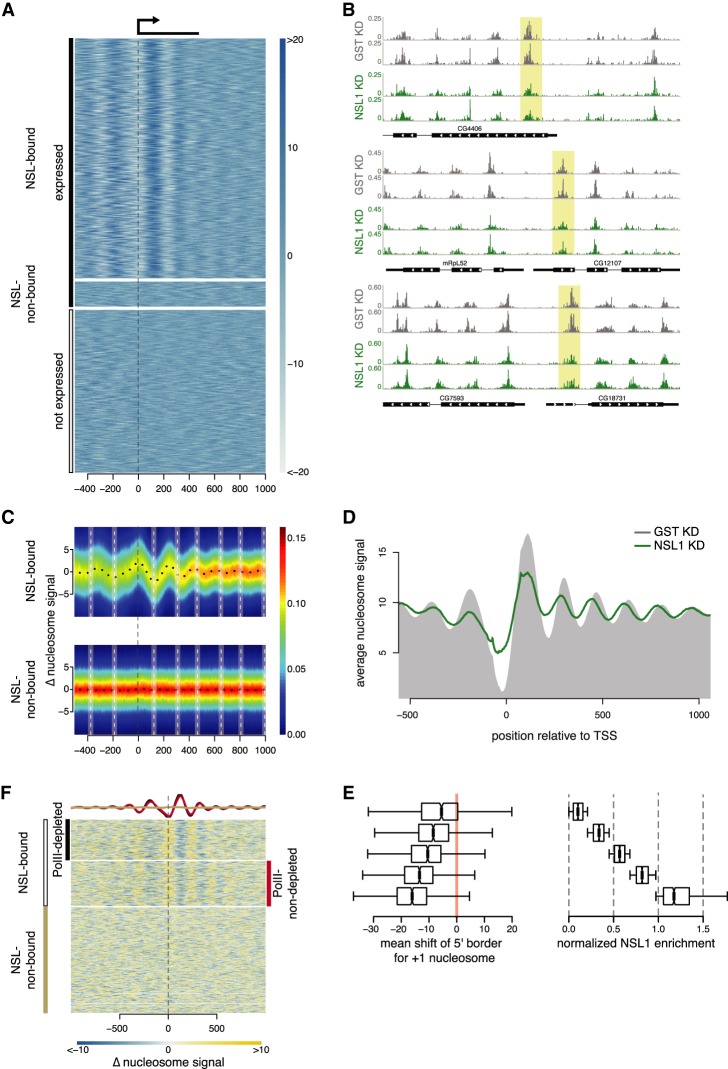Figure 1.
NSL complex loss leads to reduced nucleosome patterning at target TSSs. (A) Heat map showing the nucleosome signal (see Materials and Methods) on NSL-bound active genes (top), NSL-nonbound active genes (middle), and inactive genes (bottom), −500 to +1000 bp of the TSS. Active genes had RNA sequencing (RNA-seq) reads covering their exons, whereas inactive genes had none. (B) Three representative examples of nucleosome density (read counts normalized to sequencing depth using RPGC) in control (gray) and NSL1 knockdown (green). The +1 nucleosomes are shaded in yellow. (C) Heat map depicting the difference in nucleosome densities in control and NSL1 knockdown −500 bp to +1000 bp of the TSS of NSL-bound genes (top) and NSL-nonbound (bottom) genes. The y-axis represents changes in nucleosome signal. The white vertical dashed lines denote wild-type nucleosome positions. The color scale bar indicates scatter density. (D) Summary plot showing the nucleosome positions in wild-type (gray area) and NSL1-depleted (green line) cells. (E) Quantification of the shift of the +1 nucleosomes in base pairs (left) for five groups of MapCap TSSs (6281) with increasing (top to bottom) NSL1 log2 chromatin immunoprecipitation (CHIP)/input ratio (right). (F) Heat map showing changes in nucleosome density upon NSL1 knockdown for NSL-bound genes with Pol II loss upon NSL1 knockdown (top), NSL-bound genes with no Pol II loss (middle), and NSL-nonbound genes (bottom). The three groups were determined by first kmean clustering the promoters by the summed log2 enrichment of NSL3 and MBDR2 in a window ±290 bp around the annotated TSS into NSL-bound and -nonbound. The promoters of the NSL-bound genes were further subdivided into promoters that loose Pol II and that retain Pol II by kmeans clustering by the average difference of Pol II log2 enrichment between control and NSL1 knockdown in a window ±145 bp around the annotated TSS. The summary plot depicts the average nucleosome density of NSL-bound genes with Pol II loss (black) and NSL-bound genes without Pol II loss (red).

